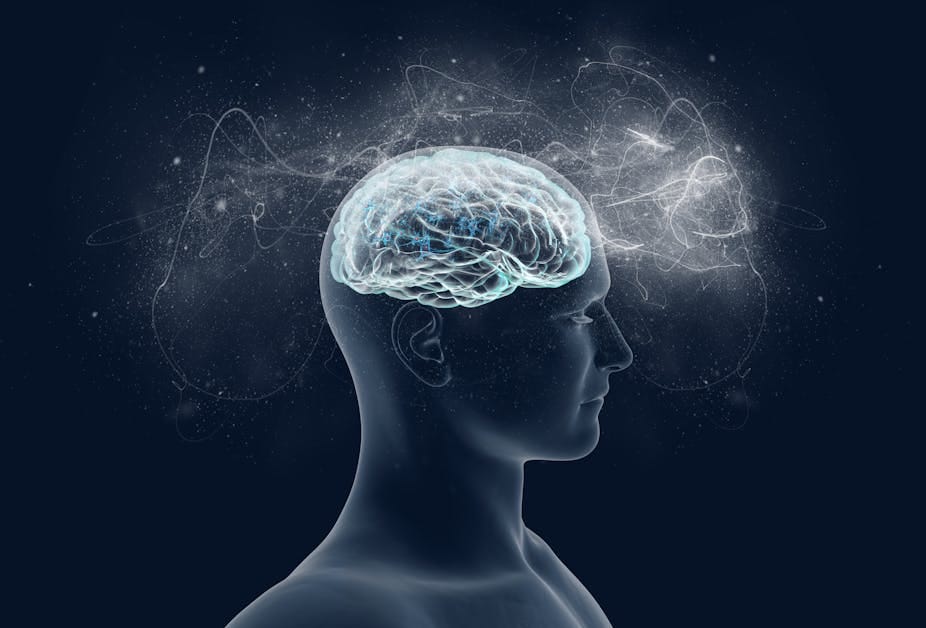We spend every moment of our lives inside it. It colors our thoughts, shapes our decisions, and defines the very sense of self. It is the experience of being—of seeing, feeling, remembering, desiring, imagining. Consciousness is not something we possess like a tool. It is something we are. Yet for all its intimacy, it remains the most mysterious phenomenon in the known universe.
Ask a neuroscientist, a philosopher, a psychologist, and a monk what consciousness is, and you may get four different answers. Is it a byproduct of the brain’s complexity? Is it an emergent property of neural computation? Is it the very fabric of the universe, somehow interwoven with matter itself? Or is it something else entirely—something we do not yet have the tools to grasp?
For centuries, the nature of consciousness was left to poets and philosophers. But in the past few decades, it has become a frontier of science. Armed with brain scanners, mathematical models, artificial intelligence, and cognitive psychology, researchers are now probing the mind with a new urgency. Their mission is as bold as it is daunting: to understand how the three pounds of gray matter in our heads produces the rich inner life of thoughts, feelings, and awareness.
This is the story of what we’ve learned—and what still lies beyond the reach of science’s spotlight.
Consciousness and the Question of Experience
At its core, consciousness is experience. The taste of chocolate, the sound of rain, the feeling of joy, the perception of color—these are all instances of consciousness. They are what philosophers call “qualia,” the raw sensations that make up our subjective world. While machines can process information and even appear intelligent, they do not seem to feel anything. That inner life—that what it’s like to be something—is what distinguishes conscious beings from unconscious ones.
This is the problem that the philosopher David Chalmers famously called the “hard problem” of consciousness. The “easy problems”—as strange as it may sound—are those of explaining how the brain processes vision, controls movement, or stores memory. But the hard problem is explaining how any of this gives rise to experience itself. Why should a set of neurons firing in the visual cortex create the sensation of the color blue? Why does pain hurt? Why does anything feel like anything at all?
Science can describe neural activity down to the cellular level, but turning those descriptions into an understanding of subjective experience is another matter entirely. And yet, consciousness is not a vague abstraction. It is the most concrete thing we know. It is the only thing we can be sure of, even when we doubt the world around us.
The Brain: A Biological Universe
Peel away the skull, and you find the most complex object in the known universe: the human brain. Composed of about 86 billion neurons, each making thousands of connections to other neurons, the brain is a living network of incomprehensible intricacy. Every thought, every sensation, every memory we possess is encoded in this writhing electrical symphony.
Modern neuroscience has revealed stunning insights into how different regions of the brain contribute to consciousness. The occipital lobes handle vision, the temporal lobes interpret sound and language, the parietal lobes govern space and movement, and the frontal lobes choreograph our decisions, attention, and self-reflection. Yet consciousness is not neatly localized in any one region. It seems to emerge from patterns of activity that span the entire brain, involving feedback loops and synchronized firing across distant areas.
Functional MRI scans can now show in real time how the brain lights up when we see a face, make a choice, or fall in love. EEG machines can record brainwaves that change with alertness, dreaming, and anesthesia. These technologies give us clues about the correlates of consciousness—what’s happening in the brain when we feel aware. But a correlation is not an explanation.
What we see in the scanner is not consciousness itself. It is only the footprint, the reflection. The essence remains hidden.
Theories of Consciousness: Seeking the Spark
In an effort to crack the mystery, scientists have proposed a variety of theories—some grounded in biology, others in mathematics or even quantum physics. Each seeks to explain how the raw machinery of the brain could give rise to the rich tapestry of subjective experience.
One of the most influential is the Global Workspace Theory, developed by cognitive scientist Bernard Baars and refined by neuroscientists like Stanislas Dehaene. This theory suggests that consciousness arises when information in the brain becomes globally available—broadcast like a signal across multiple specialized systems. When you become aware of a thought, it’s not just processed by one region—it’s shared, amplified, and made accessible to your entire cognitive architecture.
Another major contender is Integrated Information Theory (IIT), pioneered by neuroscientist Giulio Tononi. IIT proposes that consciousness corresponds to the degree of information integration in a system. The more tightly interwoven and causally connected the parts of a system are, the more conscious it is. In this view, consciousness is not just a byproduct of computation but a fundamental property of highly organized matter—perhaps even a universal one.
Then there are more speculative ideas. Some physicists and philosophers have argued that consciousness might involve quantum processes inside neurons—a notion popularized by Roger Penrose and Stuart Hameroff. Though controversial and unproven, such theories challenge us to consider whether consciousness might require an entirely new kind of science—one that goes beyond classical neuroscience.
So far, none of these theories has achieved consensus. Each illuminates part of the picture, yet none explains the whole. The closer we get, the more complex the puzzle becomes.
States of Consciousness: A Shifting Landscape
Consciousness is not a fixed thing. It flows, fluctuates, deepens, and disappears. We are awake, then dreaming. Alert, then distracted. Focused, then lost in thought. Consciousness moves through a spectrum of states, each with its own character and neural signature.
Sleep is perhaps the most familiar alteration of consciousness. In deep sleep, awareness fades almost completely, though the brain continues to work, restoring the body and processing memory. In REM sleep, consciousness returns in strange form—dreams. The dreaming mind is a theater of bizarre imagery, intense emotion, and creative thought. Though disconnected from external input, it creates entire worlds from within.
Under anesthesia, the brain is forced into a kind of artificial sleep. Consciousness vanishes, yet the heart still beats, the lungs breathe. Neuroscientists study anesthesia as a tool for understanding what happens in the brain when consciousness is switched off—and what must be present for it to return.
There are also altered states induced by drugs, trauma, or meditation. Psychedelics like LSD and psilocybin can dramatically alter perception, emotion, and the sense of self. Some users report mystical experiences, feelings of unity, or encounters with seemingly intelligent entities. These states challenge our understanding of what consciousness can be—and whether its boundaries are wider than we thought.
The Self: The Illusion That Thinks
Consciousness feels personal. We don’t just experience sensations—we experience them as ours. We have memories, identities, preferences, goals. This inner narrative, this sense of a unified “I,” seems inseparable from our conscious mind. Yet neuroscience tells a more puzzling story.
The brain contains no single “self center.” Rather, identity emerges from the coordination of many subsystems. Memory, emotion, perception, decision-making—all contribute to the feeling of being someone. But damage to certain areas can fragment this sense. Patients with split-brain syndrome, for instance, can behave as if they have two separate minds in one body. People with depersonalization disorder may feel as though they are observing their life from outside, disconnected from their own experience.
Some scientists argue that the self is an illusion—a useful construction, but not a true entity. It is the mind’s way of creating coherence from chaos, stitching together the past and future into a single narrative thread. Just as the brain fills in the blind spot in our vision, it may also invent the illusion of a continuous self to make sense of our ever-shifting inner world.
Yet even if it is an illusion, it is a powerful one. The self is the protagonist of our conscious lives. We live, act, love, and suffer through it.
Consciousness in Other Beings
Is consciousness unique to humans? Few questions are more ethically and scientifically urgent. Most researchers agree that many animals are conscious to some degree. Mammals, birds, and even cephalopods like octopuses show signs of perception, emotion, and intentional behavior.
Studies of crows solving puzzles, dolphins recognizing themselves in mirrors, or elephants mourning their dead suggest a rich inner life. The Cambridge Declaration on Consciousness, signed by leading scientists in 2012, affirmed that non-human animals likely experience awareness and affective states.
But the mystery deepens with creatures more distant from us. Do fish feel pain? Do insects have subjective experiences? Can a worm with only 302 neurons be aware of anything at all?
And what about artificial systems? As machines grow more intelligent, will they one day become conscious? Could a robot think? Feel? Want? These are no longer just science fiction questions—they are real dilemmas that confront the boundaries between computation and consciousness, between simulation and experience.
The Development of Consciousness
We are not born with full-fledged consciousness. Infants begin life with limited awareness, a world of sensation and instinct. But over time, through experience and interaction, a sense of self emerges. By 18 months, most toddlers can recognize themselves in a mirror. By age four, they begin to understand that others have minds—a milestone called theory of mind.
The growth of consciousness is tied to language, memory, and social connection. As children learn to speak, they gain the tools to reflect on their own thoughts and imagine the thoughts of others. Stories, play, and conversation shape the architecture of awareness.
But the development of consciousness also raises profound questions. When does it begin? At birth? In the womb? What does it mean for moral and legal rights? And what happens when consciousness fails to develop fully, as in severe neurodevelopmental disorders?
Understanding the arc of consciousness from birth to death helps illuminate its nature—but also its fragility.
The Fragility of Consciousness
Consciousness feels like the most solid part of existence, yet it is surprisingly fragile. A blow to the head can erase memories or alter personality. Diseases like Alzheimer’s can gradually dismantle awareness, peeling away the layers of self until only flickers remain. Disorders of consciousness, such as coma or the vegetative state, reveal how easily the light of awareness can dim without extinguishing life itself.
Scientists study these conditions not only to heal them but also to understand the boundary between consciousness and unconsciousness. Brain scans sometimes reveal signs of covert awareness in patients who appear unresponsive, suggesting a hidden inner world trapped within an immobile body. The ethical implications are profound. How do we know when someone is truly unconscious? How should medicine, law, and society treat those on the edge of awareness?
This fragility also extends to everyday mental states. Drugs, hormones, fatigue, and trauma can warp perception and thought. Hallucinations can conjure vivid realities without external stimuli. Dissociation can split consciousness into separate streams. These phenomena remind us that consciousness is not a single thing but a dynamic process—something the brain constructs moment by moment, vulnerable to disruption.
Consciousness and the Physical World
If consciousness emerges from the brain, what does that say about its relationship to the physical world? For centuries, philosophers debated dualism versus materialism. René Descartes argued that mind and matter are fundamentally distinct: one immaterial, the other physical. Modern science largely favors materialism—the idea that consciousness arises from physical processes. But the exact mechanism remains elusive.
Some thinkers propose that consciousness is an emergent property, like liquidity emerging from water molecules or flight arising from aerodynamics. Others suggest it is more fundamental, woven into the fabric of reality itself—a view known as panpsychism. According to this perspective, even basic particles might possess primitive forms of experience, which combine in complex ways within brains to produce the rich awareness we know.
This is not as mystical as it sounds. Consider electricity: it is a basic property of particles, but only when organized in circuits does it power a computer. Likewise, consciousness could be a basic property of matter, which complex brains channel into higher forms.
Still, such ideas remain speculative. What is clear is that consciousness challenges our understanding of physics. Unlike mass or charge, it is not easily measured or quantified. Some scientists argue that to truly explain consciousness, physics itself may need to evolve.
Time, Memory, and the Flow of Awareness
Consciousness is not static. It moves through time, weaving together past, present, and future into a seamless narrative. Without memory, there is no continuous self. Without anticipation, no planning or imagination.
Neuroscience reveals that memory is not a single entity but many: working memory for immediate tasks, episodic memory for personal events, procedural memory for skills. These memories are stored across networks of neurons, reactivated to reconstruct the past. Each recollection is a creative act, blending truth with invention, shaping who we believe we are.
Time itself is felt differently depending on our conscious state. In danger, moments stretch into eternity as the brain floods with adrenaline. In meditation or flow, hours can vanish unnoticed. Psychedelics can fragment time into kaleidoscopic loops.
This temporal aspect of consciousness suggests it is not just a static property of brains but a dynamic unfolding—a process that stitches moments together into the tapestry of lived experience.
Consciousness and Artificial Intelligence
As machines grow more sophisticated, a question once confined to philosophy now presses on technology: could an artificial intelligence become conscious?
Current AI systems process language, recognize faces, play games, and even simulate conversation. They can appear intelligent, but do they truly experience anything? Most scientists say no. AI lacks the integrated, embodied, biological architecture that human consciousness seems to require. It manipulates symbols and data without subjective feeling.
Yet as AI advances, the line may blur. If a machine’s information processing became as complex and integrated as the human brain, some theories like Integrated Information Theory suggest it might achieve some degree of awareness. This possibility forces deep ethical questions: How would we know if a machine is conscious? What rights would it have? Could turning it off be akin to harming a person?
Exploring machine consciousness also feeds back into understanding human minds. By attempting to build systems that mimic cognition, scientists learn which elements of intelligence require consciousness and which do not. The quest to create artificial minds thus mirrors our quest to understand our own.
The Frontier of Neuroscience and Philosophy
Despite breathtaking progress, consciousness research remains a frontier where science meets philosophy. Brain imaging maps neural activity, but the subjective feel of experience—what philosophers call phenomenal consciousness—still resists objective capture.
Some argue that this is an insurmountable barrier: consciousness cannot be fully explained from an external perspective because it is inherently first-person. Others believe that advances in neuroscience, computation, and mathematics will eventually bridge the gap.
Emerging fields like neurophenomenology seek to combine rigorous brain science with detailed reports of subjective experience. By correlating brain states with lived states, researchers hope to build a more complete science of consciousness—one that does not leave the mind out of its own explanation.
Toward a Science of the Mind
Even without solving the hard problem, neuroscience has transformed our understanding of consciousness. We know how attention focuses awareness, how networks in the brain synchronize during perception, how damage or drugs alter the mind. We can modulate consciousness with stimulation, peer into its mechanisms with unprecedented clarity, and trace its evolution across species and development.
Yet at the horizon, mystery remains. Why is there an inner life at all? Why does matter think? This question may require a conceptual revolution as profound as quantum physics or relativity. It may demand entirely new ways of knowing—new tools, new mathematics, new philosophies.
For now, consciousness stands as both subject and object of our inquiry: the lens through which we know the world and the puzzle we cannot yet fully solve. But this does not diminish the pursuit. Like explorers sailing toward uncharted seas, scientists of consciousness push forward, guided by curiosity and awe.
A Mind Reflecting on Itself
Consciousness allows the universe to look back on itself. Through us, matter contemplates its own existence, stars ponder their own light. This is not poetic metaphor but simple truth: the atoms in your brain were forged in ancient suns, scattered across the galaxy, gathered into a planet, and assembled by evolution into a mind capable of wonder.
In this sense, consciousness is not an anomaly but a natural flowering of cosmic history. The universe has become aware of itself through the fragile, flickering minds of beings like us.
We may never fully unravel its mysteries. But perhaps the value of consciousness is not in explaining it away but in living it—experiencing love, art, curiosity, and meaning. To be conscious is to participate in the greatest miracle we know: the miracle of being.
And as science advances, we edge closer to understanding that miracle—not to reduce it, but to appreciate it more deeply, to glimpse how three pounds of matter can hold the infinity of thought and feeling, how the universe can awaken inside a human mind.






